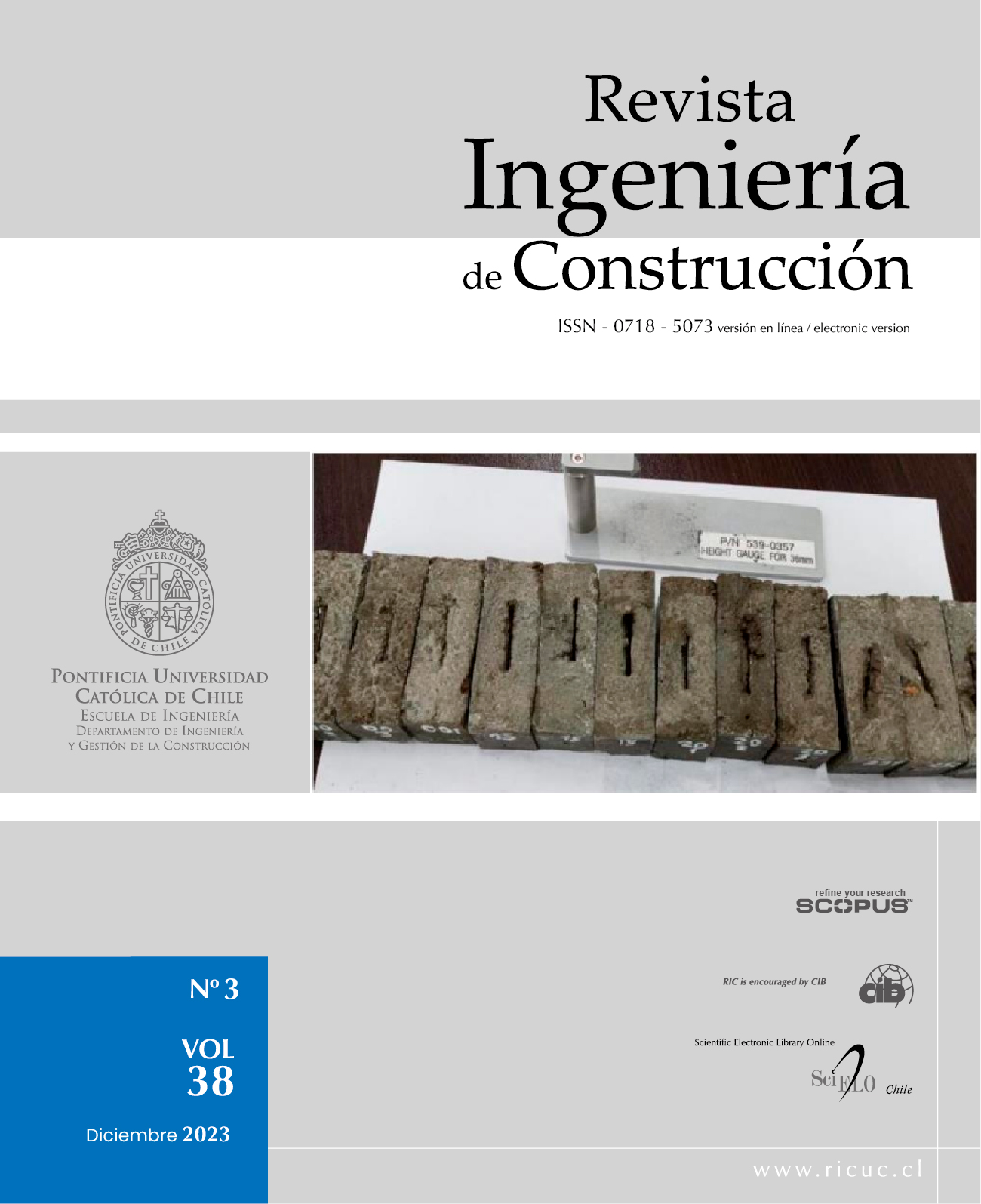Influence of artificial intelligence on the optimization of the dosage of natural hydraulic lime, plastic and metallic fibers on the geological characteristics of a treated soil.
DOI:
https://doi.org/10.7764/RIC.00080.21Keywords:
Natural hydraulic lime, plastic fibers, metallic fibers, artificial intelligence, optimizationAbstract
This study was necessary because in Peru the application of resources such as artificial intelligence in the optimization of treatment doses in soil stabilization is not promoted. The purpose of the study was to evaluate the influence of the application of an artificial intelligence model on the optimization of the dosage of natural hydraulic lime, plastic and metallic fibers on the geological characteristics of a gravelly clay soil. The dosages of stabilizers and laboratory tests were used as input variables (predictors) and the values of mechanical tests as output variable. As main conclusions, an interesting application in terms of additive optimization was demonstrated in comparison with experimental results in the field. The model suggests a reduction of predominant materials, such as lime, to obtain acceptable results based on actual test results. The implications of including artificial intelligence, achieves substantial strength maintenance superior to the natural sample of 6 times, respectively, with an optimization of 4% natural lime, 2.25% plastic fiber, 10% metallic fiber and 83.75% natural soil. It is concluded that the influence of applying the artificial K-OPLS model on the real experimental dosages, implies in the reduction of lime up to 50% less, and the increase of plastic fiber in 0.75% more, the metallic fiber maintains its real dosage and the natural soil varies slightly.


